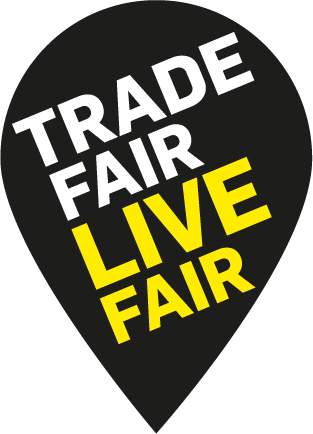JOIN OUR BOARD OF DIRECTORS
Fashion Revolution CIC is seeking new members to join our Board of Directors during a pivotal period of transition and strategic renewal. We are looking for leaders who share our values and are committed to supporting the long-term vision and sustainability of the organisation.
Recruitment is open to candidates globally, but due to regulatory compliance, we also seek candidates based in the UK specifically.
Please note that these are voluntary roles
About Fashion Revolution
We are the world’s largest fashion activism movement, mobilising citizens, brands, and policymakers through research, education, and advocacy. Our vision is a global fashion industry that conserves and restores the environment and values people over growth and profit.
About the Role – Treasurer
The Treasurer will support the effective governance and financial oversight of Fashion Revolution CIC. As we emerge from a period of organisational transition, the Treasurer will be a key figure in setting a strong foundation for our go-forward strategy.
This role involves guiding financial strategy, supporting oversight of systems and controls, and ensuring compliance with all relevant regulatory and funder requirements.
Key Responsibilities
Strategic
- Provide financial insight to support the charity’s strategic direction
- Ensure that financial planning supports the organisation’s goals
Financial Oversight
- Ensure timely and accurate financial reporting to the Board, including annual accounts and management reporting
- Oversee budget processes, financial controls, and policy development
- Lead on the appointment and engagement of auditors
- Work closely with the finance team to ensure sound day-to-day financial practices
Assets and Reserves
- Review and support investment and reserves policies
- Monitor the appropriate use and maintenance of the organisation’s assets
Governance
- Chair the Finance and Governance Sub-Committee
- Ensure the Board’s financial duties are understood and exercised properly
- Contribute to Board development, including annual review processes
General Director Responsibilities
- Actively contribute to strategic decision-making
- Ensure resources are used effectively and responsibly
- Uphold the values, reputation, and integrity of Fashion Revolution
- Participate in Board and subcommittee meetings, read relevant papers, and provide guidance using your expertise
Who We’re Looking For
We welcome expressions of interest from candidates with:
- Senior-level financial experience, ideally with Board or trustee exposure
- Knowledge of financial management in a charity, CIC, or not-for-profit context
- Familiarity with UK accounting and reporting requirements
- Strategic insight and a collaborative approach to governance
- A genuine commitment to our mission and values
About the Role – Board Member
This is a general Board Member role with a focus on strategic support and good governance. As we finalise our transition from a Community Interest Company (CIC) to a Charitable Incorporated Organisation (CIO), the new Board Member will contribute to building a stable, inclusive, and future-ready organisation.
We are particularly keen to hear from candidates who bring experience in at least one of the following areas:
- Strategic fundraising or philanthropic engagement
- Sustainable fashion or ethical supply chains
- Not-for-profit or mission-driven leadership
- Governance, particularly CIC to CIO transitions or membership-based models
Key Responsibilities
Strategic
- Contribute to shaping and overseeing the organisation’s strategic direction
- Offer constructive insight and support to the executive team and fellow Board members
Governance Oversight
- Help ensure the organisation meets its legal and fiduciary responsibilities
- Promote transparency, accountability, and inclusive decision-making
Engagement
- Represent Fashion Revolution’s mission, values, and objectives externally where appropriate
- Support Board development and help strengthen the organisation’s overall effectiveness
General Director Responsibilities
- Actively contribute to strategic decision-making
- Ensure resources are used effectively and responsibly
- Uphold the values, reputation, and integrity of Fashion Revolution
- Participate in Board and subcommittee meetings, read relevant papers, and provide guidance using your expertise
Time Commitment
We are currently completing a governance transition and laying the groundwork for a sustainable, forward-looking strategy. As such, the estimated time commitment is:
- At least five hours per week over the next six months (during the transition period)
- Thereafter, approximately 6–8 Board and subcommittee meetings per year, with periodic engagement with the executive team
Who We’re Looking For
We welcome expressions of interest from individuals with:
- Experience in at least one of the following:
- Strategic fundraising or philanthropic engagement
- Sustainable fashion or ethical supply chains
- Not-for-profit or mission-driven leadership
- Governance or legal structures (ideally including CIC to CIO transitions)
- A collaborative and strategic mindset
- A strong alignment with our mission and values
- Prior Board or trustee experience is helpful but not essential
Honorarium: £1,000 per year
How to apply
Please send your CV and a short covering note outlining your interest and relevant experience with the subject line ‘’Trustee’’ to recruitment@fashionrevolution.org. Applications will be reviewed on a rolling basis. The closing date for applications is August 7, 2025.
Fashion Revolution is an equal opportunity employer. We are particularly interested in hearing from candidates from under-represented groups, including women, disabled people, Black, Asian, and Minority Ethnic (BAME) communities.
Greenhushing a divatiparban: az új negatív fenntarthatósági trend?
A fenntartható divat és a környezettudatos vásárlás egyre népszerűbb témákká váltak az elmúlt években, a hétköznapi fogyasztók is jobban figyelemmel kísérik és érzékenyebben reagálnak divatmárkák lépéseire, döntéseire. Könnyen lehet, hogy már te is hallottál a greenwashing jelenségről, de mi a helyzet a csendesebb „testvérével”, a greenhushinggal, az úgynevezett zöld elhallgatással? Utánajártunk, hogy mit jelent pontosan ez a fogalom és hogyan érinti a divatipart, a gyártókat és a fogyasztókat.

Mi az a greenhushing?
A greenhushing olyan gyakorlat, amikor cégek, márkák szándékosan elhallgatják fenntarthatósági erőfeszítéseiket és céljaikat, még akkor is, ha azok jó szándékúak és előrevezetőek. Ennek egyik fő oka a “greenwashing” vádjától vagy a nyílvános kritikáktól való félelem. Ezen túlmenően sokan tartanak attól is, hogy ha nyilvánosságra hozzák fenntarthatósági céljaikat, és azokat nem sikerül teljesíteniük, akkor hitelességük csorbulhat. Ez a jelenség különösen a kisebb vállalkozások körében figyelhető meg, amelyek számára a fenntarthatósági tanúsítványok megszerzése költséges lehet, ezért inkább a háttérben végzik fenntartható tevékenységeiket.
A greenhushing jelenség azonban több szempontból is problémás. Egyrészt gátolja az iparág átláthatóságát, hiszen a márkák nem osztják meg egymással és a nyilvánossággal a fenntarthatósági gyakorlatokat és innovációkat, amelyek másokat is inspirálhatnának, edukálhatnának, változásra sarkallhatnának. Másrészt a fogyasztók egyre inkább igénylik a vállalatok fenntarthatósági tevékenységeiről szóló információkat, és a kommunikáció hiánya pedig bizalmatlanságot szülhet. Ezen kívül, ha nem vállalják fel nyilvánosan a fenntarthatósági céljaikat, akkor elmarad a számonkérhetőség is, ami szintén nem előrevezető a környezeti változások elősegítésében.
A greenhushing tehát, bár elsőre ártalmatlannak tűnhet, hosszú távon akadályozza a fenntarthatóságra irányuló globális erőfeszítéseket, és éppen ezért akár ugyanolyan káros lehet, mint a greenwashing.
Mi a különbség?
A legfőbb különbség a greenwashing és a greenhushing között az, hogy mit osztanak meg (vagy mit nem) a fogyasztókkal, és ezt milyen szándékkal teszik.
A greenwashing során a vállalatok túlzó állításokkal és megtévesztő marketinggel próbálják fenntarthatónak feltüntetni magukat, míg a greenhushing esetében szinte éppen az ellenkezője történik: elhallgatják vagy minimalizálják környezettudatos tevékenységeiket és a környezetvédelmi gyakorlataikat. Az eredmény mindkét esetben az, hogy a fogyasztók nem kapnak teljes képet, így átláthatatlanná válnak a márkák valódi tevékenységei és nem tudhatjuk meg, hogy mi zajlik pontosan a háttérben.
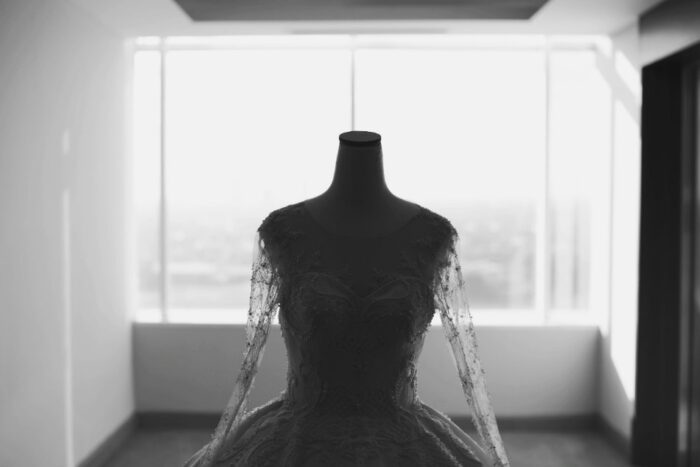
Miért választják a márkák a greenhushingot?
Bár a greenhushing kedvezőtlen hatással van a divatiparra, nem szabad hibáztatni az etikus kisvállalkozásokat, ha óvatosan bánnak fenntarthatósági céljaik nyilvánosságra hozatalával. Gondoljunk csak bele, hogy milyen kihívásokkal találkozik egy kis, etikus márka.
Nem könnyű fenntarthatóan működni kis márkaként, akiknek nem csak az elindulás nehéz, hanem az is, hogy tartósan a piacon tudjanak maradni, így az etikus divatmárkák különösen nehéz helyzetben találhatják magukat. Elég csak abba belegondolni, hogy a fenntartható ruházat előállítása és etikus marketingje sokkal magasabb árakat követel, -miközben a haszonkulcs alacsonyabb-, mint a fast fashion óriások esetében. A fenntartható alapanyag, a lokális gyártás, a kézművesség mind-mind hozzájárul ahhoz, hogy a végén miért lesz a termék ára sokkal magasabb, mint a tömeggyártott daraboknak. A slow fashion minőséget és értéket képvisel.
A kisvállalkozásoknak legtöbbször nincs elég erőforrásuk, hogy profi kommunikációs csapatokat vagy jogi szakértelmet alkalmazzanak, így inkább nem osztanak meg információkat, hogy elkerüljék a greenwashing vádját.
Továbbá, ebben a túlzottan érzékeny világban, sok kisebb, de akár nagyobb cég is fél attól, hogy ha túl sokat oszt meg fenntarthatósági terveiről és nem tudják maradéktalanul teljesíteni azokat, akkor kritikát kapnak. Ez kis márkaként akár vevő és publikumvesztést is jelenthet, amit nem engedhet meg magának sem a kezdeti, sem a későbbi időszakokban. Így az ilyen helyzetekben legtöbben inkább a csendet választják.

Te vagy én tudunk tenni valamit a greenhushing csökkentésében? Igen!
- Támogassuk az átláthatóságot: Keressünk olyan márkákat, amelyek őszintén beszélnek termékeikről és gyártási folyamataikról.
- Legyünk megértőek: A kisvállalkozások gyakran szűkös erőforrásokkal dolgoznak, de sokuk valóban igyekszik fenntarthatóbbá tenni az ipart.
- Tudatos vásárlás: Keressük az etikus és fenntartható márkákat, valamint tájékozódjunk vásárlás előtt.
Bár a greenhushing nem olyan feltűnő, mint a greenwashing, mégis komoly kihívást jelent a divatipar átláthatósága szempontjából. Az ipar fenntartható átalakulásához nemcsak a márkák aktív részvételére van szükség, hanem a fogyasztók tudatosságára is, hiszen csak így érhető el, hogy a divat valóban fenntarthatóbb és átláthatóbb legyen. De vajon ugyanolyan veszélyes a greenhushing, mint a greenwashing? Jó kérdés, és talán nincs is rá egyértelmű válasz.
Az viszont biztos, hogy azok a cégek és márkák, amelyek a zöld elhallgatást választják, egyúttal azt is eldöntik, hogy nem osztják meg jó példáikat, innovatív és eredeti gondolataikat – pedig ezek másokat is inspirálhatnának a fenntarthatóbb működésre. Így jogosan tehetjük fel a kérdést magunkban, hogyha pozitív példák rejtve maradnak, hogyan várhatjuk el, hogy a fenntartható fejlődés valóban széles körben elterjedjen és vajon hogyan alakulhat át a divatipar egy olyan ágazattá, amely nemcsak a környezettudatosságot hirdeti, hanem annak hiteles képviselőjévé is válik? Talán ez lehet az elkövetkezendő időkben a divatipar egyik meghatározó kérdése, amelyre a választ a gyártónak és fogyasztónak együtt kell keresnie.
Írta/ fordította: Kovács Enikő
Források:
Greenhushing in Fashion: It’s Bad… But We Kind of Get it | Sustainable Fashion Blog | Project Cece
MN6 Energiaügynökség – Greenhushing – az új negatív fenntarthatósági trend
A greenhushing ma már legalább akkora gond, mint a greenwashing – Portfolio.hu
Mi az a greenhushing és miért olyan népszerű a cégek körében?
Képek forrása: Unplash.
English
Greenhushing in the fashion industry: the new negative sustainability trend?
Written/translated by: Enikő Kovács
Sustainable fashion and eco-conscious shopping have become increasingly popular topics in recent years, with everyday consumers paying closer attention and reacting more sensitively to the actions and decisions of fashion brands. You may have heard of the phenomenon of greenwashing, but what about its quieter “brother”, greenhushing? We looked into what exactly this concept means and how it affects the fashion industry, manufacturers and consumers.
What is greenhushing?
Greenhushing is the practice of companies and brands deliberately hiding their sustainability efforts and goals, even if they are well-intentioned and progressive. One of the main reasons for this is the fear of being accused of “greenwashing” or being publicly criticized. In addition, many people fear that if they make their sustainability goals public and fail to meet them, their credibility may be damaged. This phenomenon is especially observed among smaller businesses, for which obtaining sustainability certificates can be expensive, and therefore they prefer to carry out their sustainable activities in the background.
However, the greenhushing phenomenon is problematic in several ways. On the one hand, it hinders transparency in the industry, as brands do not share with each other and with the public the sustainability practices and innovations that could inspire, educate and stimulate change. On the other hand, consumers are increasingly demanding information about companies’ sustainability activities, and a lack of communication can lead to distrust. In addition, if they do not publicly commit to their sustainability goals, there is a lack of accountability, which is also not conducive to promoting environmental change.
So, while greenhushing may seem harmless at first glance, it hinders global efforts towards sustainability in the long run and can therefore be just as harmful as greenwashing.
What is the difference?
The main difference between greenwashing and greenhushing is what is shared (or not shared) with consumers, and with what intention.
In greenwashing, companies try to portray themselves as sustainable through exaggerated claims and misleading marketing, while in greenhushing, almost the opposite happens: they conceal or minimize their environmentally conscious activities and practices. The result in both cases is that consumers do not get the full picture, making the real activities of brands opaque and preventing us from knowing exactly what is going on behind the scenes.
Why do brands choose greenhushing?
While greenhushing has a negative impact on the fashion industry, we can’t blame ethical small businesses for being cautious about publicizing their sustainability goals. Just think about the challenges a small, ethical brand faces.
It’s not easy to operate sustainably as a small brand, which not only has a hard time getting started, but also has a hard time staying in the market, so ethical fashion brands can find themselves in a particularly difficult position. Just think about the fact that the production and ethical marketing of sustainable clothing requires much higher prices – while the profit margin is lower – than in the case of fast fashion giants. Sustainable raw materials, local production, craftsmanship all contribute to why the price of the product is much higher in the end than mass-produced pieces. Slow fashion represents quality and value.
Small businesses often lack the resources to hire professional communications teams or legal expertise, so they prefer not to share information to avoid accusations of greenwashing.
Furthermore, in this hyper-sensitive world, many smaller and even larger companies are afraid that if they share too much about their sustainability plans and fail to fully implement them, they will be criticized. As a small brand, this can even mean losing customers and audiences, which you cannot afford either in the initial or later periods. So in such situations, most people prefer to remain silent.
Can you or I do something to reduce greenhushing? Yes!
Support transparency: Look for brands that are honest about their products and production processes.
Be understanding: Small businesses often work with limited resources, but many of them are genuinely trying to make the industry more sustainable.
Shop consciously: Look for ethical and sustainable brands and do your research before you buy.
Although greenhushing is not as visible as greenwashing, it still poses a serious challenge to transparency in the fashion industry. A sustainable transformation of the industry requires not only the active participation of brands, but also consumer awareness, as this is the only way to truly make fashion more sustainable and transparent. But is greenhushing as dangerous as greenwashing? It’s a good question, and perhaps there’s no clear answer.
What is certain, however, is that companies and brands that choose to remain green are also choosing not to share their good examples, innovative and original ideas – which could inspire others to operate more sustainably. Thus, we can rightly ask ourselves the question: if positive examples remain hidden, how can we expect sustainable development to truly spread widely and how can the fashion industry transform into a sector that not only promotes environmental awareness, but also becomes a credible representative of it? Perhaps this could be one of the defining questions of the fashion industry in the coming times, the answer to which must be sought by the manufacturer and the consumer together.
Sources:
Greenhushing in Fashion: It’s Bad… But We Kind of Get it | Sustainable Fashion Blog | Project Cece
MN6 Energiaügynökség – Greenhushing – az új negatív fenntarthatósági trend
A greenhushing ma már legalább akkora gond, mint a greenwashing – Portfolio.hu
Mi az a greenhushing és miért olyan népszerű a cégek körében?
Hungarian:
A tudatos fogyasztók új hullámával a fenntartható divat iránti kereslet virágzik és ha már erre az oldalra tévedtél, akkor biztos van bennünk valami közös. Lehet te is szenvedélyesen szereted a divat világát, vagy lelkesen próbálsz megragadni minden olyan alkalmat, amivel a saját mikrokörnyezetedben is olyan változást tudsz elérni, amivel egy picit könnyíthetsz a bolygó terhén.
A Fashion Revolution mozgalom tagjaként hiszünk a közösség erejében, egyéni szinten is lehet változást eredményezni!
Egy tanulmány szerint az Egyesült Államokban a vásárlók 59%-a szeretné, ha a divatipar fenntarthatóbbá és környezetbarátabbá válna. Bármely divatháznak, amely az élvonalban szeretne maradni, annak kapcsolódnia kell ehhez az irányvonalhoz, és meg kell felelnie avásárlók igényeinek. Ma már nem lehet szemet hunyni a textilipar által okozott környezetkárosodás felett. Mind a fogyasztók, mind az iparág egészében bekövetkezett változás miatt a fenntartható divatpiac értéke 2021 és 2025 között várhatóan több mint 3 milliárd dollárra nő.
A jó hír az, hogy rengeteg olyan lépés van, amivel a fenntartható divat ösvényén olyan játszi könnyedséggel lépdelhetsz, mint Carrie Bradshaw az Upper East Side utcáin. Ez a lista útravalónak szolgálhat, miközben tudatosabb vásárlási szokásokat alakíthatsz ki.
Secondhand
Turkálóba, vintage üzletekbe vagy gardróbvásárra járni, olyan, mint egy kincskeresés, sosem tudhatod mi akad majd a kezedbe. Az adott darab történetet mondd el szavak nélkül. A használt ruha piac egyre nagyobb teret hódít, de nem is csoda, hiszen ezek a darabok karaktert és egyediséget adnak a gardróbunkhoz, miközben új életet adunk a mások által már megunt ruhadaraboknak.
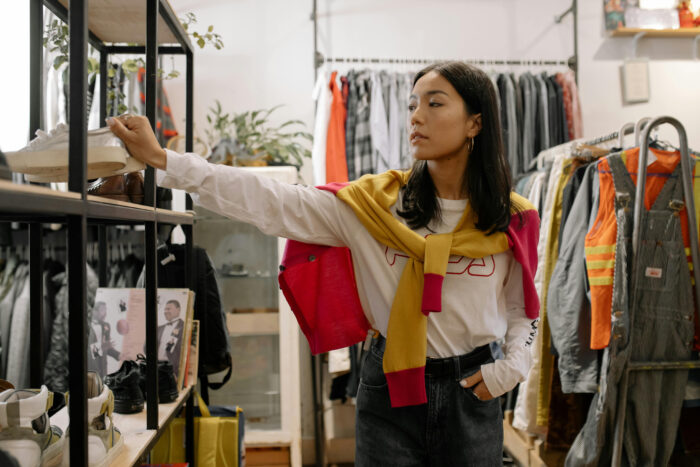
Upcycling
Az upcycling, más néven értéknövelő újrahasznosítás, az ökotudatos fogyasztók kreatív oldalát hozza elő. Izgalmas alkotói folyamat, amikor az eldobott rongyokból valami teljesen új születik, farmerből táska vagy régi nyakkendőkből szoknya. Rengeteg lehetőség rejlik ebben a technikában, így érdemes szabadjára engedni a fantáziánkat.
Körforgásos divat
2025-ben is az egyik legdominánsabb trendek közé tartozik a körforgásos divat. Ez egy olyan üzleti modell, amely a hulladék csökkentésére, valamint az erőforrások újrafelhasználására és újrahasznosítására összpontosít. A cél az, hogy már a tervezés folyamat során gondoljunk arra, hogy mi lesz a ruhák sorsa életciklusuk végén, miként lehet őket majd újrahasznosítani. Izgalmas innováció zajlik a textiliparban a biológiailag lebomló vagy komposztálható szálak előállítása terén. Az egyik ilyen újítás a CELYS komposztálható szál, amely 179 nap alatt természetes módon szén-dioxiddá, vízzé és biomasszává bomlik le. Már a boltok polcain is találkozhatsz olyan termékekkel, amelyek 100% újrahasznosított anyagból készülnek, vásárlás előtt minden esetben érdemes elolvasni a ruhák címkéjét.
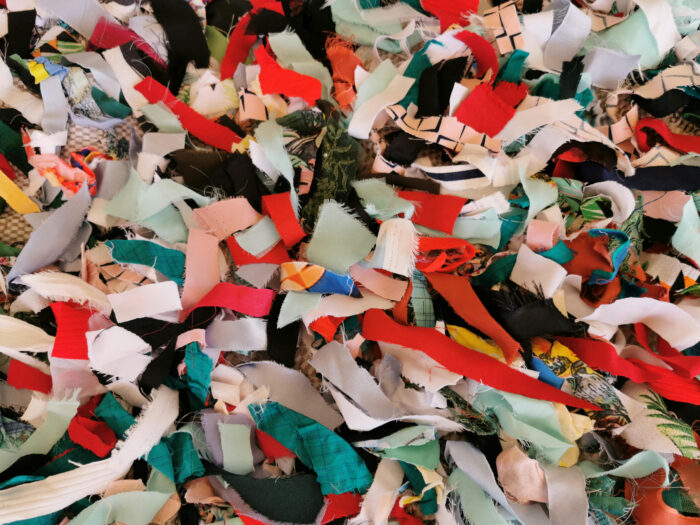
Etikusság és átláthatóság
Az etikus beszerzés azt jelenti, hogy az anyagok beszerzése során nem okoztak kárt sem az embereknek, sem a bolygónak, valamint a gazdálkodás, a termelés és a forgalmazás során érvényesítették a tisztességes kereskedelmi gyakorlatokat. 2025-ben a márkáknak átláthatóbbnak kell lenniük gyakorlatukkal kapcsolatban, és fenntartható állításaikat tanúsítványok vagy harmadik fél által végzett ellenőrzések formájában kell alátámasztaniuk.
Minimalista divat
A fenntartható divatmárkák egyre inkább a minimalista esztétikát alkalmazzák, hogy felszámolják a gyakori szezonális vásárlások szükségességét. Ez az irányzat legkönyebben az egyik kedvenc mondásunkkal írható le; „a kevesebb több”. A trend fő jellemzői a letisztult vonalak, semleges színek és időtlen dizájnok. A hangsúly a minőségen van, nem pedig a mennyiségen. Sok esetben bele sem gondolunk, hogy egy-egy darabot többféleképpen is fel tudunk venni, csak a megfelelő párosításra van szükség. Az eszközeink tárháza végtelen, csak a képzelet szabhat határt.
Remélem sikerült ráébreszteni arra, hogy a fenntartató divat, nem is olyan idegen és unalmas terep, mint ahogy azt elsőre gondolná az ember. Válaszd ki számodra a legjárhatóbb utat és alkalmazz Te is zöldebb gyakorlatokat!
Írta: Arnóth Nikolett, Fashion Revolution Hungary
Forrás: https://www.celys.com.au/blog/sustainable-fashion-trends-for-2025-what-to-expect
Képek forrása: https://www.pexels.com/hu-hu/
English:
With a new wave of conscious consumers, the demand for sustainable fashion is booming, and if you’ve landed on this page, then we have something in common. You may be passionate about fashion, or you may be eager to seize every opportunity to make a difference in your own micro-environment and help the planet.
As a member of the Fashion Revolution movement, we believe in the power of community, and we can make a difference on an individual level!
According to a study, 59% of consumers in the United States want the fashion industry to become more sustainable and environmentally friendly. Any fashion house that wants to stay ahead of the curve must connect with this trend and meet the needs of its shoppers. Today, we can no longer turn a blind eye to the environmental damage caused by the textile industry. Due to the shift in both consumers and the industry as a whole, the sustainable fashion market is expected to grow to over $3 billion between 2021 and 2025.
The good news is that there are plenty of steps you can take to make your sustainable fashion journey as effortless as Carrie Bradshaw on the streets of the Upper East Side. This list can serve as a guide while you develop more conscious shopping habits.
Secondhand
Going to thrift stores, vintage stores, or closet sales is like a treasure hunt, you never know what you’ll find. Tell the story of a piece without words. The secondhand clothing market is gaining ground, and it’s no wonder, as these pieces add character and uniqueness to our wardrobes while giving new life to clothes that others have already gotten tired of.
Upcycling
Upcycling, also known as value-added recycling, brings out the creative side of eco-conscious consumers. It is an exciting creative process when something completely new is created from discarded rags, from jeans to bags or from old ties to skirts. There are many possibilities in this technique, so it is worth letting your imagination run wild.
Circular fashion
One of the most dominant trends in 2025 is circular fashion. It is a business model that focuses on reducing waste and reusing and recycling resources. The goal is to think about what will happen to clothes at the end of their life cycle and how they can be recycled during the design process. Exciting innovation is taking place in the textile industry in the field of producing biodegradable or compostable fibers. One such innovation is the CELYS compostable fiber, which naturally breaks down into carbon dioxide, water and biomass in 179 days. You can already find products on store shelves that are made from 100% recycled materials, so it’s always a good idea to read the label before buying.
Ethics and transparency
Ethical sourcing means that materials have been sourced without harming people or the planet, and fair trade practices have been applied in farming, production and distribution. In 2025, brands will need to be more transparent about their practices and support their sustainability claims with certifications or third-party audits.
Minimalist fashion
Sustainable fashion brands are increasingly adopting a minimalist aesthetic to eliminate the need for frequent seasonal purchases. This trend is best described by one of our favorite sayings; “less is more”. The main characteristics of the trend are clean lines, neutral colors and timeless designs. The emphasis is on quality, not quantity. In many cases, we don’t even think that we can wear a piece in multiple ways, all we need is the right pairing. Our arsenal of tools is endless, only our imagination can set the limit.
I hope I managed to make you realize that sustainable fashion is not as foreign and boring as you might think at first. Choose the most viable path for you and adopt greener practices!
Written by: Arnóth Nikolett, Fashion Revolution Hungary
Off Paper: The Hidden Cost of Home-based Workers
By: Aastha Jain , member of Fashion Revolution India
 No Policies, No Records—42 million home-based workers remain systematically invisible, with approximately 19% engaged in apparel production. As a policy researcher with the Fashion Transparency Index Working Group between September 2024 and December 2024, I met several women stitching buttons and embroidering and overturning socks in Delhi’s dense colonies, revealing the mechanisms through which capitalist structures perpetuate exploitation, transforming homes into sites of economic negotiation.
No Policies, No Records—42 million home-based workers remain systematically invisible, with approximately 19% engaged in apparel production. As a policy researcher with the Fashion Transparency Index Working Group between September 2024 and December 2024, I met several women stitching buttons and embroidering and overturning socks in Delhi’s dense colonies, revealing the mechanisms through which capitalist structures perpetuate exploitation, transforming homes into sites of economic negotiation.
The informal sector has three archetypes: contractors, piece-rate workers, and self-employed workers. Their labour encompasses completing semi-finished apparel and accessories like bags, shoes, cushion covers, and bangles, assembling bindi packets, attaching buttons, applying trims, packaging, labeling, embroidery, and crochet.
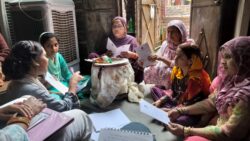 Fixed contractors connected to factories function as intermediaries who distribute work daily or weekly in different neighborhoods. Factories dictate compensation for the contractors. The contractors extract a 40-50% margin before redistributing wages. Piece rates demonstrate huge variability, fluctuating based on geographical location, distance from factories, labour demand, and skills scarcity—ranging from INR 1 ($0.012) to INR 70 ($0.83) per piece. The COVID-19 pandemic exacerbated existing vulnerabilities. Unlike other sectors experiencing recovery post-pandemic, this trade witnessed a wage decline. Contractors, who also tend to be migrant workers, often run away with the due amount. Those who stay nearby or in the same neighborhood as workers show cooperation and timely payment.
Fixed contractors connected to factories function as intermediaries who distribute work daily or weekly in different neighborhoods. Factories dictate compensation for the contractors. The contractors extract a 40-50% margin before redistributing wages. Piece rates demonstrate huge variability, fluctuating based on geographical location, distance from factories, labour demand, and skills scarcity—ranging from INR 1 ($0.012) to INR 70 ($0.83) per piece. The COVID-19 pandemic exacerbated existing vulnerabilities. Unlike other sectors experiencing recovery post-pandemic, this trade witnessed a wage decline. Contractors, who also tend to be migrant workers, often run away with the due amount. Those who stay nearby or in the same neighborhood as workers show cooperation and timely payment.
A shared space for home and work exposes profound gender-based contradictions. Women, responsible for domestic labour, are compelled to negotiate complex frameworks—first fulfilling family responsibilities, then pursuing work in the remaining time. Women decide whether they can accommodate more labour or not as per their domestic schedule. Many women are not allowed to move outside, rendering home-based work as a survival strategy. Work remains fundamentally precarious: no monthly guarantees, with labour oscillating between hectic periods and prolonged intervals of scarcity. The irregularity breeds systemic mistrust and hopelessness, compelling some to abandon this labour mode while others persist as a final economic recourse.
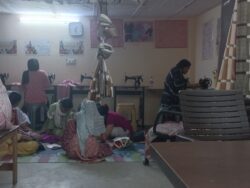 To meet their basic needs, workers try to maximise work, generating low piece-rate wages. Such compensation structures incentivize maximum labour extraction. Families, including children who spend substantial amounts of time with mothers, become integrated into production processes. The fundamental contradiction emerges: how can corporations proclaim freedom from forced or child labour when entire communities are economically coerced into such labour arrangements?
To meet their basic needs, workers try to maximise work, generating low piece-rate wages. Such compensation structures incentivize maximum labour extraction. Families, including children who spend substantial amounts of time with mothers, become integrated into production processes. The fundamental contradiction emerges: how can corporations proclaim freedom from forced or child labour when entire communities are economically coerced into such labour arrangements?
In Delhi, workers inhabit densely populated neighborhoods characterized by open sewage systems, intermittent electricity supply, water scarcity, and inadequate ventilation. Typical living rooms(a 10 x 10 feet space)egregiously contradict International Labour Organization (ILO) conventions mandating workspace requirements. Workers absorb additional economic burdens, including electricity costs, healthcare expenses, and workspace rental, which remain strategically unaccounted for in supply chain calculations.
“Bindi sticking impacts eyesight, back pain, and exposure to chemicals severely. Another such hazard is from clothes made with chemical dyes. During extreme heat in summer, dyes stick to hands causing skin infections. No provision of safety gears, social security schemes, healthcare provisions worsen the worker’s conditions.” – Subadhra Pandey, Representative SEWA in Delhi
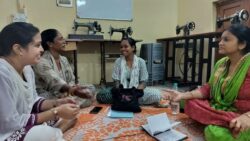 Unionization of informal workers confronts multifaceted obstacles: absence of direct employer contact, lack of governmental protective mechanisms, and the invisibility of home-based labour. Brand identification by workers and the union is impossible within this fragmented production ecosystem. Merely 0.25% of workers comprehend their position within broader supply chains, mentions Subadhra. The proliferation of counterfeit products further obscures potential accountability mechanisms.
Unionization of informal workers confronts multifaceted obstacles: absence of direct employer contact, lack of governmental protective mechanisms, and the invisibility of home-based labour. Brand identification by workers and the union is impossible within this fragmented production ecosystem. Merely 0.25% of workers comprehend their position within broader supply chains, mentions Subadhra. The proliferation of counterfeit products further obscures potential accountability mechanisms.
SEWA is a union of 2.9 million informal workers. SEWA in Delhi serves 70,000 workers out of which 7,000 work in the garment industry as home-based workers. Along with other South Asian organisations, the union has developed a transparency tool called Wage Card to document monthly work and negotiate for fair wages. This tool records transactional details, work performed, payments due, and brand associations.
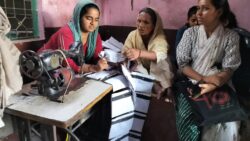 The fundamental struggle demands systemic recognition. Unions articulate comprehensive demands: joint employer responsibility, profit redistribution, social security provisions, regular work, minimum wage guarantees, and most importantly ratification of international labour conventions- C177.
The fundamental struggle demands systemic recognition. Unions articulate comprehensive demands: joint employer responsibility, profit redistribution, social security provisions, regular work, minimum wage guarantees, and most importantly ratification of international labour conventions- C177.
The invisibility of home-based workers reinforces profound epistemic violence—where labour is essential yet systematically marginalized. Most workers do not even acknowledge themselves as workers but as homemakers, wives, or mothers. Their work remains unacknowledged by governments, employers, and manufacturers alike. The hidden costs—including electricity, tools, healthcare, family labor, and unpaid wages—create a perception of cheap production, enabling brands to increase profits by transferring economic burdens to the working class of producing nations.
–
The article is written by Aastha Jain, a visual designer and researcher. She is also a member of Fashion Revolution India. The insights are based on discussions with Subadhra Pandey, Representative SEWA in Delhi, and home-based workers from Delhi. For contact, reach at: aasthajn29@gmail.com
On Paper: Worsening Conditions of Labour in India’s Garment Sector
By: Aastha Jain , member of Fashion Revolution India
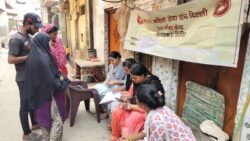
The conditions of workers in producing nations like India reveal a stark contradiction: despite increasing international legislative protections, workers’ lived experiences continue to deteriorate. The acts of intensifying production and alienation of labour have left the workers isolated with stagnant minimum wages and growing monopolization of brands and suppliers. During my time as a policy researcher with the Fashion Transparency Index Working Group between September 2024 and December 2024, I discussed with the union leaders and researchers, the conditions of the garment workers on the shop floor, and the conditions of piece-rate home-based workers in India.
Rukmini VP, President of Garment Labour Union(GLU) highlights that amongst 72 sectors across industries in India, only 4 sectors namely Garment, Leather, Spinning, and Textile have the lowest wages; INR 8,000 ($95) – INR 12,000 ($143) per month (p/m). As per the national law, minimum wages have to be revised every 3-5 years, yet it has stagnated for over a decade in many states. Even if it gets revised its implementation is rare, often retaliated by the factory owners with court cases.
Labour requiring an average of 9 to 11 hours per day (which contradicts Indian Labour Law that limits to 48 hours a week), and paying less than $100 p/m, can increase up to 14 to 16 hours per day during peak seasons.“Workers are allowed a maximum of 30-minute break, and even this is contingent on meeting punishing production targets of 150-200 garment pieces per hour,” says Rukmini VP. Rampant harassment, caste-based discrimination, poor healthcare, and childcare facilities, are further deteriorating the physical, social, and mental conditions of a worker.
“Workers are allowed a maximum of 30-minute break, and even this is contingent on meeting punishing production targets of 150-200 garment pieces per hour,” says Rukmini VP.
The gendered nature of the workforce amplifies these economic challenges. A predominantly female workforce (around 90%) migrates across states to manufacturing districts, being first-generation industrial workers. These migrant workers face heightened risks of harassment, possess weak negotiation power, and experience job insecurity. Underage girls between 14 and 15 years enter factories using falsified age certificates.

In addition to this exploitation which leaves individual workers vulnerable, organising resistance is also made difficult. According to interviewed union representatives, In India, less than 4% of the working class in the garment industry are part of unions. Additionally, they state that the brands, and factories employ extreme forms of tactics to suppress workers from organizing, including targeting the workers, surveillance, economic intimidation, creating yellow trade unions, stopping purchase orders (stop sourcing from that vendor), terminating employment, and threatening organizers, amongst others.
Paradoxically, increasing compliance has created new forms of exploitation. The documentation process has become so complex that specialized firms now solely manage supplier paperwork. Small manufacturers unable to navigate this bureaucratic labyrinth are being systematically eliminated, establishing a monopoly on large manufacturers. The legitimacy of submitted documentation also remains highly non-reflective of the conditions. It remains unreliable due to sole commitment to paper as a tool for auditing. There are no third-party audits or unplanned visits to verify the information shared in the submitted documents. Factory visits are meticulously planned, with workers threatened to maintain silence. The auditors do not engage with the unions who could bear testimony to the true working conditions.

Brands have transferred their responsibility and accountability of ensuring decent working conditions to the suppliers without transferring actual ownership or profits: a sublime act of class manipulation. This paper trail becomes a shield, protecting brands from accountability while maintaining the illusion of ethical production. Workers remain trapped in a system where documentation matters more than real working conditions.
Paper emerges as an instrument of oppression, simultaneously serving as a survival mechanism for the oppressed. Entrenched in their accumulated wealth, the ruling class wields economic instruments, crafting an illusion of autonomy while sharpening the blades of systemic exploitation. Combating global capitalism’s inherent transnational nature, the struggle demands international solidarity. Amidst poor implementation of local state mechanisms, trade unions increasingly rely on global support to negotiate effectively. Their core demands remain fundamental: joint employer responsibility, living wages, union recognition, regular unannounced inspections, and dignified working conditions.
——
The article is written by Aastha Jain, a visual designer and researcher. She is also a member of Fashion Revolution India. The insights are based on discussions with Rukmini VP, Garment Labour Union, Nandita Shivkumar, labour Rights Researcher, and Thivya Rakini, Tamil Nadu Textile Commons Unions. For contact, reach at: aasthajn29@gmail.com
By: So Young Park – Country Coordinator at Fashion Revolution South Korea
We all have old T-shirts with stretched or frayed necklines from countless days of wear and tear. I have clothes tucked away in the back of my wardrobe that I occasionally pull out to reminisce. Volunteering with Fashion Revolution for the past three years has taught me that fashion activism isn’t just about buying clothes with a “sustainable” label. Instead, it’s about digging through your wardrobe, pulling out old clothes, and finding ways to breathe new life into them. I waited until a hole the size of my thumb appeared in a favorite shirt, figured out how to sew it up, covered the hole with thread in my favorite color, and now enjoy the satisfaction of wearing it every time.
My journey into sustainable fashion began in 2020 in a small Batik studio in Jakarta, where I met passionate textile enthusiasts. There, I learned about the craft, history, rituals, and the deep connections between textiles, communities, and respect for nature. This experience profoundly shifted my perspective on life, extending far beyond textiles and fashion. I came to understand that clothing is more than just fabric on our bodies; it represents an ongoing dialogue with the people who make it. It is not something disposable to be taken and thrown away.

In 2021, while traveling through the beautiful landscapes of West Java, I witnessed a polluted river filled with industrial waste and a mountain littered with discarded clothes. It was a shocking sight. My nine-year-old son looked at me and said, “Mum, we have to do something for the planet.” His words stayed with me, and I began searching for ways to make a difference. Together with the dedicated members of Fashion Revolution South Korea, I’ve been volunteering to create digital campaigns that raise awareness about the complex fashion supply chain and its social and environmental impacts. These efforts include an exhibition called ‘Sa-o-ot (Love Clothes Last)’, which highlights the stories of people who have cherished their clothes for years, and translating and distributing the Fashion Transparency Index.
My nine-year-old son looked at me and said, “Mum, we have to do something for the planet.” His words stayed with me, and I began searching for ways to make a difference.

Through translation projects, I’ve met an incredible range of people—fashion designers, students, beauty industry researchers, educational planners, ESG consultants, and others—who have all said that participating in translation and campaign efforts raised their awareness. They expressed that the Fashion Transparency Index helped them understand industry changes and identify areas in need of improvement.
Year after year, the data in the report highlights key issues, revealing both progress and persistent challenges. The fashion industry’s impact varies profoundly across countries, often with devastating consequences. As detailed in the report, fashion can mean vastly different things depending on where you are: from glamorous runway shows to disposable trends that exploit vulnerable communities. In some countries, fashion is tied to women’s rights and freedoms. In others, it’s synonymous with sacrificing children’s education, clean water, and safe working conditions in favor of profits. Each country faces its unique challenges and issues to address within the fashion industry. South Korea, as one of the leading countries in the fashion industry, is no exception to these challenges including the struggles faced by small and medium-sized enterprises (SMEs) due to the weakening of the domestic production base. 
Despite these challenges, there is a universal set of values and directions we must pursue. We must recognize that these issues are not merely obstacles to overcome but opportunities to serve as turning points toward a sustainable future. On Volunteer Day, we honor the countless individuals who dedicate their time and effort to these principles. May their contributions fuel the growth of a just and green transition, paving the way for a more sustainable and equitable future.
By: Claudia Castanheira – Communications Manager at Fashion Revolution Brasil

After two weeks of complex negotiations and over a day of delays, COP29 concluded with the resignation of the poorest and most vulnerable countries, forced to accept a climate finance deal far below the $1 trillion annually demanded by 2035. The final agreement settled on $300 billion per year for climate financing until 2035, the result of over 30 hours of tense talks and setbacks.
Countries in the Global North, including the European Union delegation, the United States, and Canada, who advocated for less ambitious targets, were widely criticized by international observers and NGOs. The European bloc was even awarded the “Fossil of the Day” on November 20, a symbolic prize given by the Climate Action Network (CAN) to those seen as blocking progress during climate talks.
It’s important to highlight that without adequate financial resources, it will be impossible for countries — particularly those in the Global South — to implement climate actions for adaptation, mitigation, and a just energy transition. This lack of funding also puts the Paris Agreement’s goal of limiting global warming to 1.5°C at risk.
Another notable point was the lack of clear commitments to energy transition — including the phase-out of fossil fuels, a central theme of COP28 in Dubai. This objective, removed from the final document in 2023, was not explicitly reinstated in the agreement signed on Saturday, marking a victory for oil and gas-producing countries.
In a geopolitical context marked by wars and crises, achieving significant progress was expected to be a challenging task. However, the general feeling is that this COP resulted in few, if any, meaningful achievements, increasing distrust in the multilateral process to address the climate crisis.
Fashion at COP29
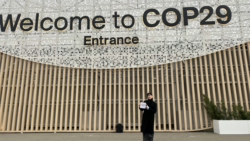
Fashion Revolution Brazil took part in COP29, engaging in discussions with civil society and other stakeholders to highlight the crucial role of fashion and textiles in addressing the climate crisis.
While formal negotiations left much to be desired, we came out stronger: Building new connections and forging global partnerships, which are essential for driving transformation in the industry.
As a civil movement, being part of these spaces is absolutely necessary. Even in the face of roadblocks and insufficient decisions, we reaffirmed our commitment to pursue a more transparent, fairer, and more sustainable fashion industry.
As members of the Brazilian delegation, we put forward clear demands:
For brands:
- Be transparent about how and where clothes are made, how many pieces are produced, and the social and environmental impacts of their production.
- Set ambitious targets for decarbonization and degrowth, and be clear about how these goals will be achieved.
- Publicly share updates on progress and concrete actions to meet these targets.
For policymakers:
- Develop policies to support Brazil and other garment-producing countries facing climate crises and vulnerabilities.
- Prioritize efforts to cut greenhouse gas emissions in the global fashion industry.
- Ensure small suppliers and family farmers have access to financial resources to build resilience against climate change.
At the event, we presented key reports, including What Fuels Fashion, a climate-focused analysis of the Global Fashion Transparency Index, and the latest edition of the Fashion Transparency Index Brazil, which reviews six years of progress and challenges in the industry.
COP30: What is next?
 Looking ahead, our goal is to mobilize the world’s largest civil movement for fashion to come together at COP30 in Belém, Brazil. This will be a landmark event: Brazil is the world’s top exporter of cotton, yet it faces major challenges like carbon emissions from deforestation and a dependency on fossil fuels.
Looking ahead, our goal is to mobilize the world’s largest civil movement for fashion to come together at COP30 in Belém, Brazil. This will be a landmark event: Brazil is the world’s top exporter of cotton, yet it faces major challenges like carbon emissions from deforestation and a dependency on fossil fuels.
The takeaway from COP29 is clear: COP30 must tackle the issues that remain unresolved. We’ll be there in the Amazon rainforest, demanding an end to fossil-fueled fashion and advocating for the rights of those most affected by the climate crisis, often the women who make our clothes.
The fashion climate agenda is just getting started!
Standing together with #FashionforClimate
What can you (citizens) do?
The most anticipated and much-awaited event in VegFest 2023 is the VegFest Runway. A sustainable fashion show that has become a highlight of the festival. This year’s event resonated with creativity and resilience even in the face of a tropical storm. It showcased how fashion can contribute to preserving the environment and saving it from the climate crisis.
The VegFest Runway captivated a blend of innovative designs from three visionary fashion designers and a celebrity stylist. Together, they illustrated the impactful mantra of recycling, reusing, and reducing or the 3Rs. Through these compelling collections, the 3Rs define modern sustainable fashion.
A Showcase of Creativity and Sustainability
The first collection was called “Simply Trashion.” It captivated the audience with its transformative use of everyday recyclable materials. The designer turned empty plastic wrappers into stunning pieces. Shredded rice sacks were also used. They challenged conventional norms about waste by incorporating repurposed fabrics.
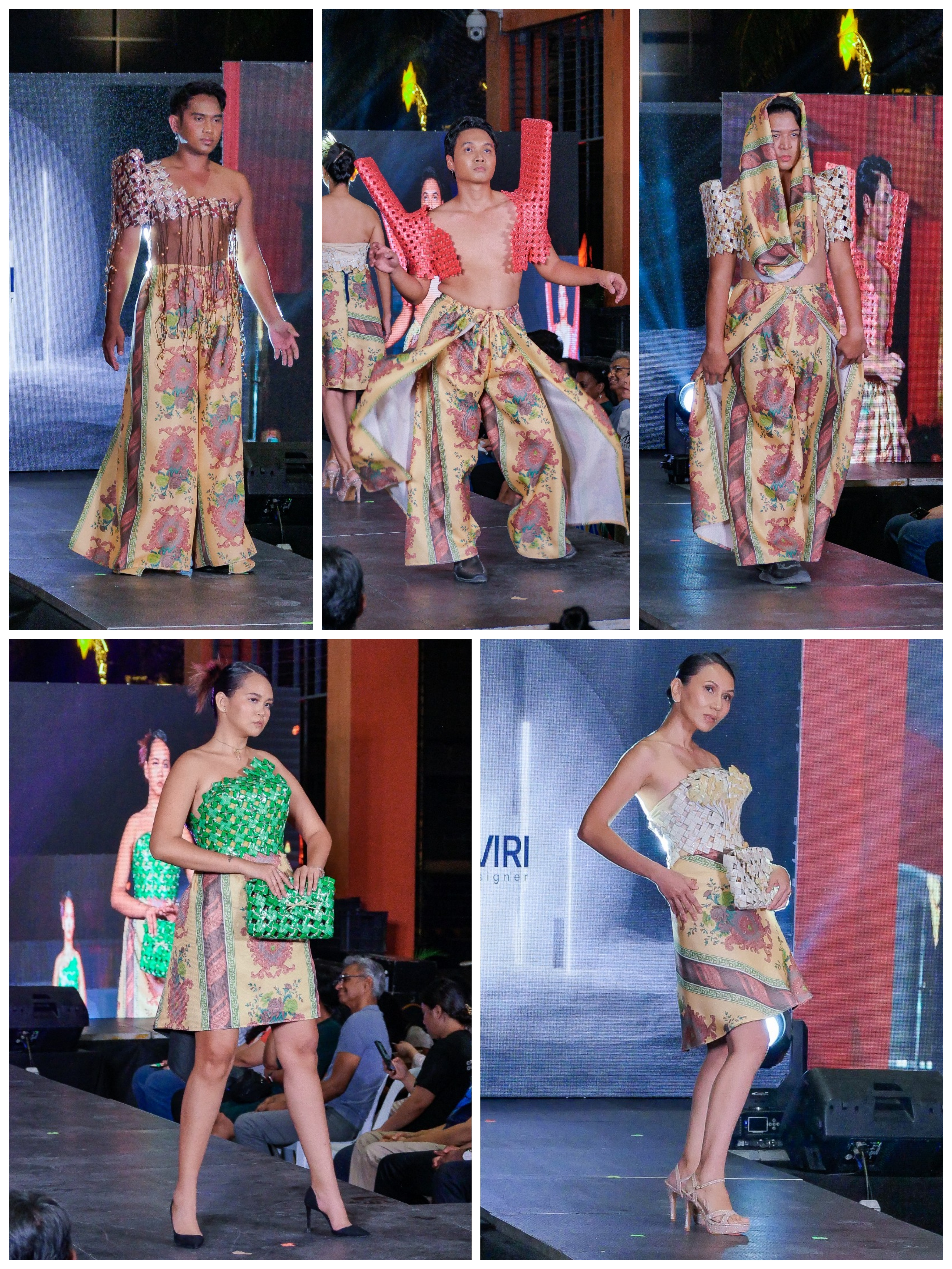
Leby Le Moría followed with a profound presentation. The attendees were treated to a collection that embodied years of introspection. The notion that vulnerability can be a source of strength is an inspiration. Each piece from her collection represented a chapter of her journey. Intricately woven with humanism and creativity.
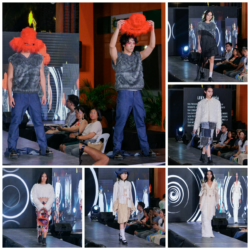
Next in line is Twinkle Ferraren’s Style Isle. The tropical landscapes of the Philippines influenced here we’ll renowned island wear designs. Putting together local artisans and indigenous tribes to encapsulate Filipino artistry. Ferraren’s collection showcased the rich Filipino heritage, and sustainably sourced textiles and accessories.
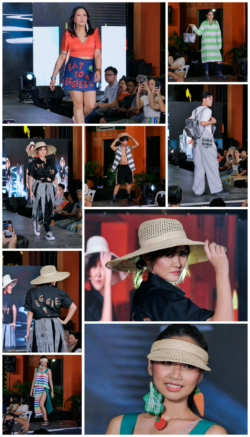
The show’s pulse quickened with celebrity eco-stylist and author Miss Kayce. She highlighted the vegan statement collection in advocating for positive change. Miss Kayce inspired the volunteer models to mix creatively and match pieces from their existing wardrobes. Aligned to their fashion choices with a vegan philosophy. A philosophy while promoting conscious consumerism.
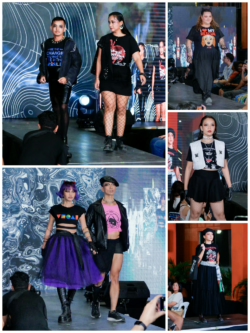
A Spotlight on Emerging Talents
The next day of VegFest 2024 is dedicated to students from SoFA Design Institute. They presented their unique street wear creations on the runway. Their instructor, Irene Grace Subang, guided their creativity to new heights. These budding designers utilized textile scraps donated by Barrios Studios.
Three esteemed experts in sustainable fashion judged the students. The judges are Prince Jimdel Ventura of Wear Forward, Buena Sawit of Barrios Studios, and celebrity stylist author Miss Kayce. They judged the students’ efforts across three categories: Best in Upcycled Construction, Most Innovative, and Best Collection. Additionally, the audience had the chance to vote for their favorite, culminating in an exhilarating People’s Choice award.
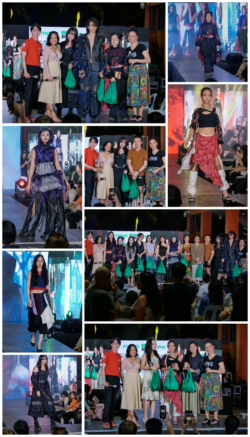
Embracing Eco-Consciousness
The VegFest Runway 2024 persevered to continue despite the looming threat of tropical storm Man-Yi. A powerful reminder of the fashion industry’s potential to drive environmental awareness. It served as a platform for creative expression and also as a conduit for inspiring actionable change.
VegFest Pilipinas, in collaboration with Fashion Revolution Philippines, reiterated its commitment to sustainable fashion. Leaving an indelible mark on the attendees and participants alike. The event successfully merged the worlds of fashion, environmentalism, and cultural heritage. It promoted a collective consciousness toward a more sustainable future.
As the final curtain fell, it was clear. The VegFest Runway has once again proved that style and sustainability can walk hand in hand. Where change is more than envisioned but it’s being woven into the very fabric of our lives.
HEY BIG FASHION BRANDS,
START FINANCING YOUR DECARBONISATION NOW!
COP29, the 29th Conference of the Parties to the United Nations Framework Convention on Climate Change, is poised to be a pivotal event in the global fight against climate change. As usual, the conference will bring together world leaders, negotiators, and stakeholders to assess progress on climate commitments made during previous COP meetings and to discuss strategies for achieving the goals of the Paris Agreement. But we are all fatigued from discussions and commitments, the time is running out and we urgently need action.
As many stakeholders are referring to COP29 as ‘the finance COP’, with negotiations seen as critical to advance a range of financial tools and instruments to support actions to address climate change, we want to reinforce our calling on major fashion brands to invest at least 2% of their revenue in a fair transition away from fossil fuels – like coal – to renewable energy sources – like wind and solar – to power fashion’s supply chain in a clean way.
Fashion is fueling the climate crisis, and major fashion brands must urgently put their money where their emissions are.
Fashion is one of the most polluting industries on the planet, with fossil fuels burned at every stage of production. The industry alone is set to overshoot the 1.5°C limit by 50%, doubling emissions rather than halving them as the science is crying out for. Frequent climate catastrophes, like extreme heat, flooding, and droughts are devastating the livelihoods of workers across global garment supply chains, with extreme weather estimated to cost nearly one million jobs by 2030.
Fashion Revolution’s new report, What Fuels Fashion? reviewed 250 of the world’s largest fashion brands and retailers and ranked them according to their level of disclosure on climate and energy-related data in their operations and supply chains. The findings revealed that major fashion brands aren’t doing enough to cut fossil fuel use in their supply chains. 86% of major fashion brands lack a public coal phase-out target, and only 3% disclose the level of financial support provided to supply chain workers affected by the climate crisis.
By investing at least 2% of their revenue into clean, renewable energy and upskilling and supporting workers, fashion could simultaneously curb the impacts of the climate crisis and reduce poverty and inequality within their supply chains. Climate breakdown is avoidable because we have the solution – and big fashion can certainly afford it.
Our Demands for Fashion Brands:
- Tell us about your clothes: How and where they were made, how many were produced.
-
- Disclose your annual production volumes
- Disclose the fiber mix of your clothes and why are these fibers
- Disclose the prices you pay to suppliers for each item and the wages that workers receive for the production of your garments
- Tell us about your impact: Measure your environmental and social impact and disclose it.
- Disclose your supplier lists (Tier 1 and Tier 2) in an open source easy to usee for others (such as excel, csv or json)
- Disclose your fuel mix across your supply chains by country
- Publish a detailed breakdown of renewable energy procurement type in your operations and supply chain
- Tell us how you are leveraging your power to influence and advocate for a decarbonisation process and just transition in your supplying countries
- Tell us about your targets: Set targets, disclose how you established them, how you plan to meet them, and report on progress.
- Disclose your climate targets, including your supply chain, backed up by a decarbonisation strategy. Oh and don’t forget to share how were suppliers consulted in the establishment of those targets.
- Publish evidence of climate action in the supply chain and how these efforts are reducing greenhouse gas emissions while increasing renewable energy capacity.
- Share how you are supporting your suppliers for a just transition
Our Demands for Policymakers:
- Implement Binding Regulations: Require transparency and corporate accountability on environmental and human rights issues in the global fashion industry.
- Responsible Purchasing Practices: Ensure brand payments to suppliers reflect the true costs of sustainable production.
- Finance the Green Transition: Develop policies that support garment-producing countries facing debt crises and climate vulnerabilities, prioritizing actions to reduce greenhouse gas emissions.
- Direct Financial Support for Suppliers: Facilitate access to financial resources for suppliers to enhance resilience to climate change, with flexible repayment terms and simplified loan processes.
- Equitable Decision-Making Models: Create decision-making frameworks informed by affected stakeholders, ensuring local contexts and regional needs are integrated into climate action planning and implementation.
What can you (citizens) do?
- You can read the What Fuels Fashion report here and share!
- Email your brands here
- Donate here to keep our revolution going
IT’S TIME FOR FASHION BRANDS TO PUT THEIR MONEY WHERE THEIR EMISSIONS ARE
Fashion Revolution, the world’s largest fashion activism movement, is at Climate Week NYC 2024 with a clear message: fashion is fueling the climate crisis, and major fashion brands must urgently put their money where their emissions are.
We’re calling on major fashion brands to invest at least 2% of their revenue in a fair transition away from fossil fuels – like coal – to renewable energy sources – like wind and solar – to power fashion’s supply chain in a clean way.
Fashion is one of the most polluting industries on the planet, with fossil fuels burned at every stage of production. The industry alone is set to overshoot the 1.5°C limit by 50%, doubling emissions rather than halving them as the science is crying out for. Frequent climate catastrophes, like extreme heat, flooding, and droughts are devastating the livelihoods of workers across global garment supply chains, with extreme weather estimated to cost nearly one million jobs by 2030.
Fashion Revolution’s new report, What Fuels Fashion? reviewed 250 of the world’s largest fashion brands and retailers and ranked them according to their level of disclosure on climate and energy-related data in their operations and supply chains. The findings revealed that major fashion brands aren’t doing enough to cut fossil fuel use in their supply chains. 86% of major fashion brands lack A PUBLIC coal phase-out target, and only 3% disclose the level of financial support provided to supply chain workers affected by the climate crisis.
By investing at least 2% of their revenue into clean, renewable energy and upskilling and supporting workers, fashion could simultaneously curb the impacts of the climate crisis and reduce poverty and inequality within their supply chains. Climate breakdown is avoidable because we have the solution – and big fashion can certainly afford it.
WE ARE CALLING ON
- Policymakers to enhance regulation
- Investors to fund and co-fund renewable energy and decarbonisation projects
- Citizens to use their voice- email major brands and retailers and call on them to invest at least 2% of their annual revenues into their decarbonisation and Just Transition efforts
- Civil society, academia, journalists to leverage data and findings to scrutinise and verify the public claims made by brands
Big fashion can no longer mask its lack of decarbonisation progress with vague, insufficient targets and pilot projects that fail to benefit most of the supply chain. The need for system change is undeniable. It’s time for brands to put their money where their emissions are.
You can read the report here. Email your brands here.
On May 19th, 2024, Rizal Park Luneta transformed into a vibrant canvas of culture and eco-consciousness. The National Parks Development Committee (NPDC) joined forces with Fashion Revolution Philippines, SoFA Design Institute, and Urban Sketchers Manila to present a unique Flores de Mayo celebration: Fashionista Flores de Mayo.
This exciting event wasn’t just about religious devotion or showcasing stunning gowns. It was a beautiful fusion of tradition and environmental awareness. SoFA design students presented modern Filipiniana gowns and suits, all crafted with sustainability in mind.
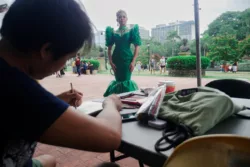 The festivities began at 5:00 pm, with Urban Sketchers Manila capturing the elegance of the “Reinas” (Queens) in their one-of-a-kind attire. As the day unfolded, the Santacruzan parade filled the air with a celebratory energy, snaking its way through the Central Section of Rizal Park.
The festivities began at 5:00 pm, with Urban Sketchers Manila capturing the elegance of the “Reinas” (Queens) in their one-of-a-kind attire. As the day unfolded, the Santacruzan parade filled the air with a celebratory energy, snaking its way through the Central Section of Rizal Park.
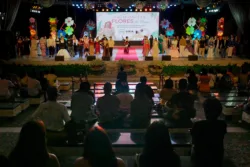
The highlight of the evening was the Santacruzan fashion show, held at the Open-Air Auditorium. Here, the public witnessed a modern interpretation of the Santacruzan tradition, where sustainable fashion took center stage.
But the sustainable fashion movement didn’t end there. From May 21st to 26th, an exhibit titled “Modern Filipin(ian)a: Reimagining Santacruzan Gowns” took place at The Gallery of Rizal Park Luneta. Visitors were invited to get a closer look at the eco-conscious gowns, sparking conversations about responsible fashion choices.
The Fashionista Flores de Mayo was a resounding success. It proved that cultural celebrations and environmental consciousness can go hand in hand, paving the way for a more sustainable future for fashion in the Philippines.
2024 was possibly our biggest and best Fashion Revolution Week yet, as we celebrated our 10th anniversary as the world’s largest fashion activism movement. Marking ten years of activism with ten days of action, we launched a new storytelling campaign and held a series of interactive skills workshops, before harnessing the power of the collective with a global day of action.
Fashion Revolution Week is the time when we come together as a global community to collectively reimagine the fashion industry. It centres around the anniversary of the Rana Plaza factory collapse, which killed around 1,138 people and injured many more on 24 April 2013. 11 years on, we were reminded of why Fashion Revolution first formed and why we can’t stop working to transform the fashion system over a decade later.
How to be a Fashion Revolutionary
This year’s theme invited our global community to share a decade of learnings on what it means to be a part of the revolution. We heard from the community builders, creative thinkers and organisers whose stories inspired the next generation of Fashion Revolutionaries, and explored fashion’s role in driving social and environmental justice.
At Fashion Revolution, we believe that everyone has a part to play in building a fashion industry that puts people and planet first, but getting started can seem daunting. Fashion Revolution Week 2024 redefined what fashion activism looks like by amplifying diverse voices within our community, sharing learnings from our past campaigns, and championing the power of craftivism.
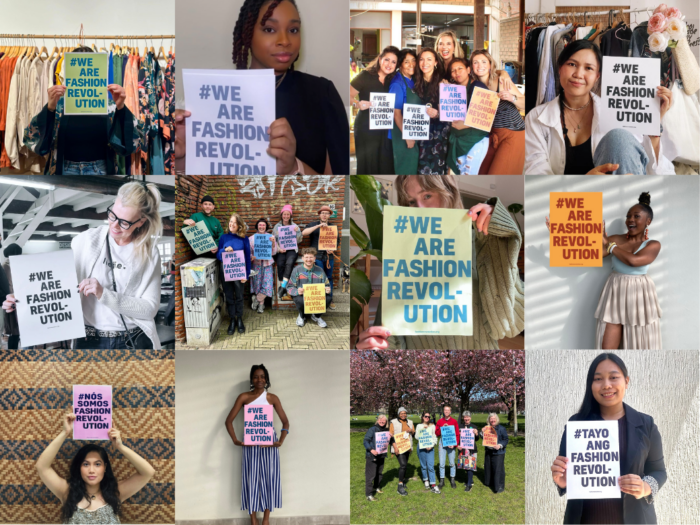
#WeAreFashionRevolution
In celebration of our 10th anniversary as a people-powered movement, we created a new storytelling campaign to share what it means to be a Fashion Revolutionary and celebrate a decade of impact. #WeAreFashionRevolution was designed to introduce you to the people behind our movement and raise awareness around the issues in the fashion industry we are collectively fighting against.
As a global organisation, we believe in platforming diverse voices to challenge misconceptions and collectively advocate for a more sustainable and ethical fashion future. Throughout Fashion Revolution Week our incredible Global Network and our online community shared their lived experiences, from the struggles faced to the victories made, and all the hard work in between, to empower new and old Revolutionaries around the globe.
We’d like to say thank you to everyone who has shared their story with us. Whether you’re just starting out or have been with us since the beginning, by sharing your journey to become a Fashion Revolutionary, you have proven that everyone has a role in our movement and we each have the power as global citizens to transform the fashion system.
Hear the untold stories of the Fashion Revolutionaries and explore #WeAreFashionRevolution
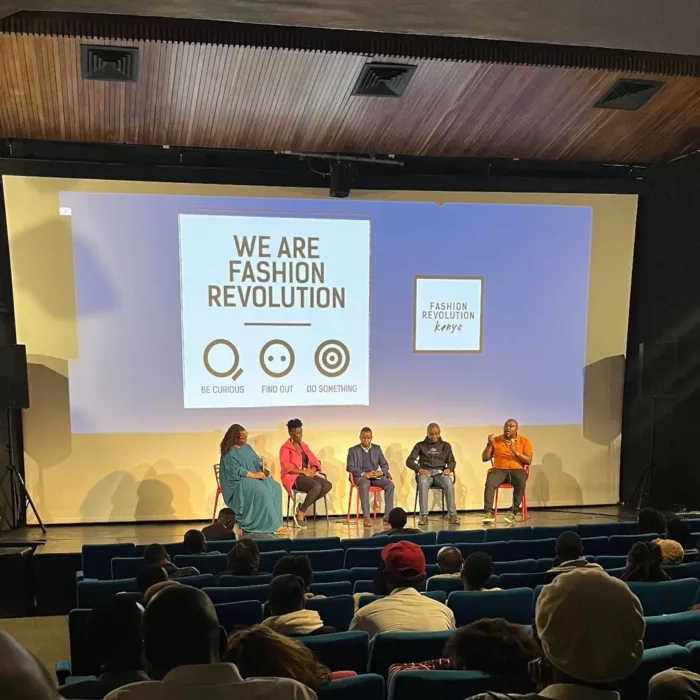
How to be a Fashion Revolutionary Workshop Series
We turned a decade of learnings, successes and campaigns into a free global workshop series, designed and led by fellow Fashion Revolutionaries. This series was designed to equip our community with everything they need to take action, including valuable communication, community building, advocacy and education skills.
Thank you to everyone who joined one (or a number!) of our workshops during Fashion Revolution Week. Whether you attended online or in-person, we hope you left feeling empowered to take action and develop your new skills in fashion activism.
Don’t worry if you missed our live sessions, as the recordings will soon be available to watch on the Fashion Revolution Youtube Channel. Remember, it’s never too late to become a Fashion Revolutionary!
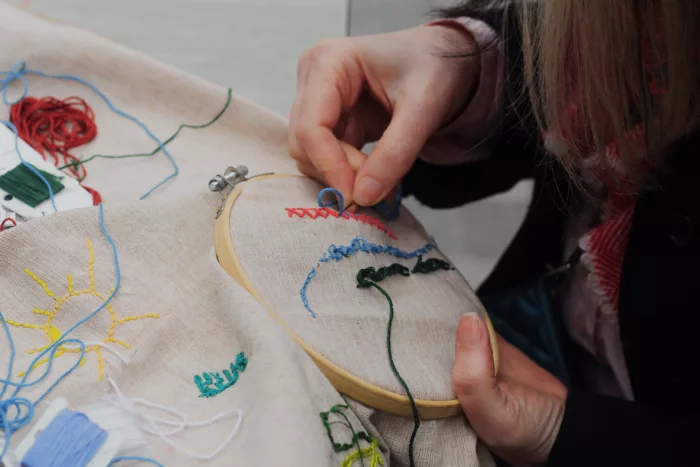
Mend In Public Day
On Saturday 20th April, Fashion Revolutionaries new and old joined us on the streets for our first global Mend In Public Day. The idea was simple: get out into your local community and stitch in protest against disposable fashion. Amidst busy Saturday shoppers, we repaired our torn pockets and broken seams and sparked conversations on making Loved Clothes Last.
When we started thinking about our plans for Fashion Revolution Week 2024, we talked about the barriers that people face when engaging in fashion activism. Too often, misconceptions around what activism looks like discourages people from taking action. We believe that our fashion activism can be quiet and gentle and still be radical. When the fashion industry is constantly trying to sell us more and more, extending the life of clothes and being creative with what we have is countercultural.
Thank you to everyone who joined us to mend the fashion system by repairing our clothes, championing artisans, sharing skills and passing down knowledge. It was a beautiful day of collective action.
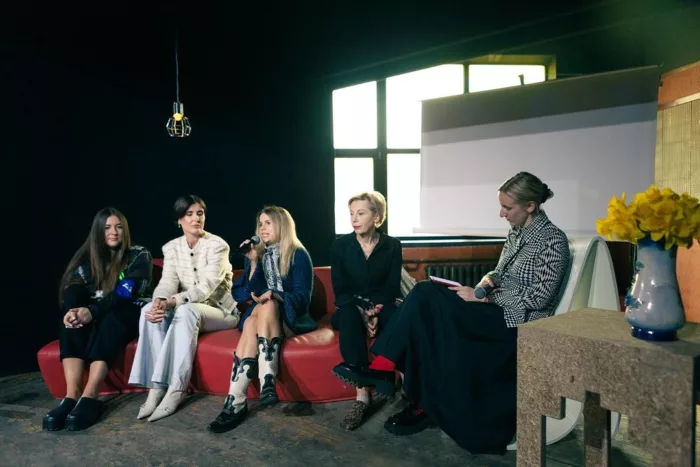
Global Network Highlights
With 80+ teams from all around the world, Fashion Revolution Week 2024 championed the perspectives and contributions of our Global Network. Here are just a small selection of highlights from our country teams:
Fashion Revolution New Zealand put on an exhibition showcasing designers reimagining fashion waste
Fashion Revolution South Africa held an interactive film screening of Fashion Reimagined
Fashion Revolution Philippines hosted a clothing swap, saving 183 clothing items from landfill
Fashion Revolution Scotland visited the Scottish Parliament to talk to MSPs about ethical fashion
Fashion Revolution India celebrated traditional craft with their Godhadi making workshop
Fashion Revolution Brazil put on an exhibition to celebrate 10 years of their movement
Fashion Revolution Mexico held a panel discussion discussing gender equality in fashion
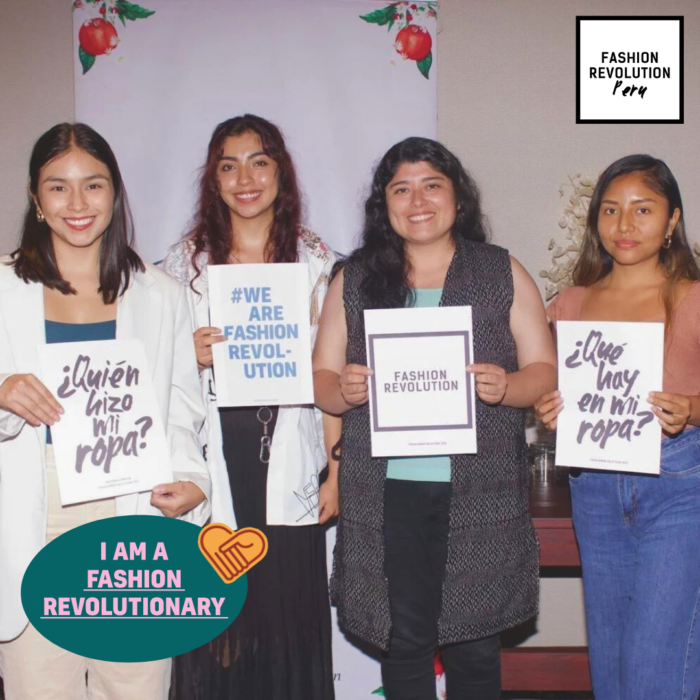
You Are Fashion Revolution
We are so grateful to everyone in our community for getting involved in Fashion Revolution Week and celebrating our 10th anniversary with us. Whether you are a brand new Fashion Revolutionary, or have been with us since the beginning, every single voice makes a difference in our fight for a fashion industry that conserves and restores the environment and values people over growth and profit.
While Fashion Revolution Week 2024 may be over, our community and our movement continues, 365 days a year. Please join us in fighting for systemic change by:
Following us on social media: Stay up-to-date by following us on Instagram, Twitter, TikTok, and LinkedIn and signing up to our weekly newsletter.
Finding your country team: Connect with the teams in your region by following them online, attending their events and volunteering with them. Find your country team here.
Using our online resources: Our website is a treasure trove of information, from how to guides and online courses to annual reporting on transparency on the fashion industry.
Donating to power the revolution: If you enjoyed Fashion Revolution Week 2024, please consider making a donation today to help us continue our work.
From all of us in the Fashion Revolution team, we appreciate your support and we look forward to seeing you next year!


